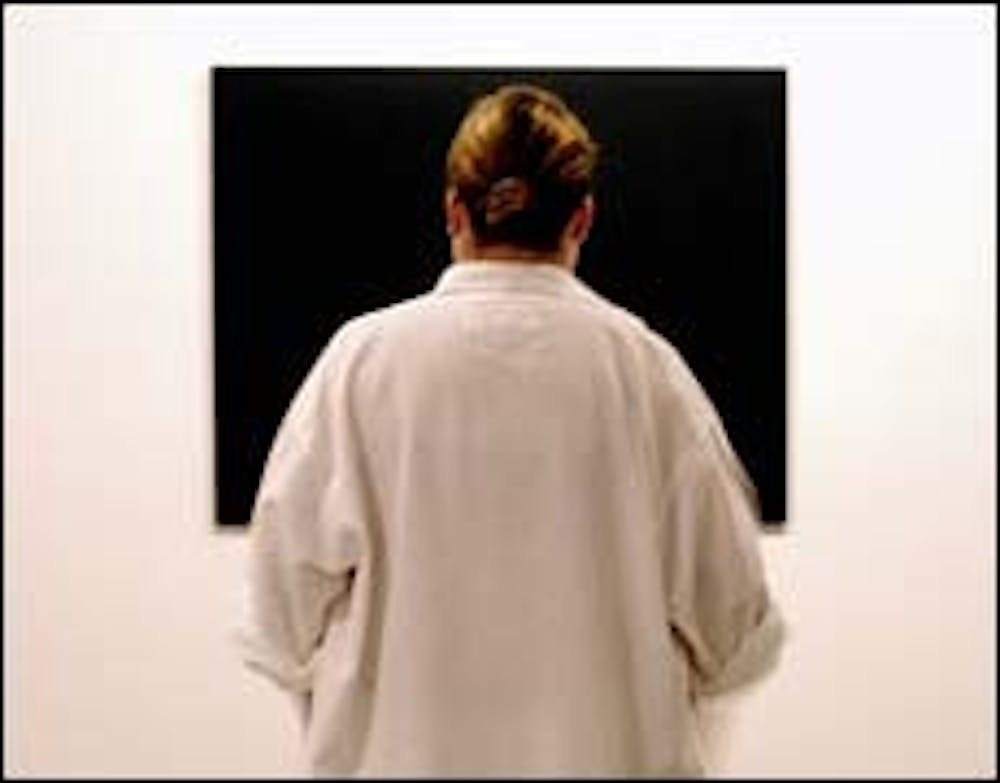I spent my summer as an intern in New York City and everyday for three months I walked past a painting that hung from a New York University modern art gallery. It was a painting of a red apple. That was it. Each day, I thought to myself, "I could do that. How is that art?" I know I wasn't the only person who saw that painting and thought just that.
It's safe to say that the majority of society believes they can appreciate art. We recognize the beauty of Botticelli's women or the sorrow in the Lady of Shalott. But it's tough to recognize anything aesthetic in a huge red apple.
So I set out on a mission to understand the meaning of modern art. I'm a cultured person. I've traveled to three continents, several countries and I'm fluent in three languages. Yet, when I see a Jackson Pollock painting, all I see is paint splattered on a canvas. Pollock, who Time magazine called "the bearded shock trooper of modern painting," does nothing for me.
Enter Claudia Mesch, an art professor, whose background in art history spans decades. I was certain she could demystify modern art for an amateur like me.
I told her I consider art something that's supposed to capture humanity in some beautiful, breathtaking form. To me, there was no art in the apple painting.
"I think maybe what you find comforting about the art that you know you like is that you can find something in it," she says. "One of the things modern art did is artists decided they didn't want to go that route, and as a result it makes things harder for you as a viewer."
As a passive viewer, I look for shortcuts in paintings. It needs to look pretty, tell me a story and draw emotion out of me.
Mesch says she believes there were a lot of philosophical reasons why artists decide not to paint for passive viewers. They aren't going to make it easy to enjoy art.
"Artists have decided that it is time to put responsibility on the shoulder of the viewers," she says. "One of the things I say to my beginners' classes is that art is a verb. It's not just a noun that sits there. Most new art demands that you do a lot of work to realize where it's coming from."
This frustrates me even more. I ask her why I should have to work so hard to understand an artist's work when the work looks lazy. She looks at me and shivers.
"You've made up your mind about what the whole thing's about," she says. "If you decide that art for you is a craft, then you've already decided what you're getting out of art. A lot of modern art refuses to have a story. Some critics have said that actually modern art has its own story, which is about admitting to the fact that it's a piece of cloth with pigment on it.
"Maybe art is about something else."
She adds that a big issue in modern art is learning to trust the artist.
"Trust that they're doing something you don't yet understand," she says. "There's also the idea that it's OK not to understand it."
I have to ask her about Pollock, the vanguard modernist. She looks at me like I'm the only person who's ever questioned his work.
"Those are tremendously complicated [paintings]," she says. "You're not going to find faces jumping out at you, but those paintings are full of color, full of lines, full of spatial effects that are created by those lines. He wanted to take painting to someplace else and he did it."
Pollock's work draws excitment and adoration from Mesch. I'm still grasping this kind of art, but now I have the tools to analyze it. I've learned the best approach to understanding modern art is to have no approach. Enter with an open mind and see where it takes you.
The apple painting is just that. Maybe that's all it's supposed to be. Perhaps the painting is saying that society is guilty of overanalyzing and overindulging certain aspects of life. We're too far in to appreciate the simple things.
Like fruit.
Reach the reporter at mindy.lee@asu.edu.




